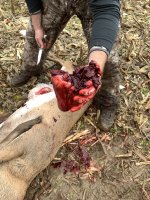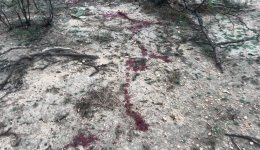I've been seeing a few posts indicating minimal to no blood trail with Hammer's.
In my "thinking" with Hammer, or other projectile, this can be more of an anatomy physiology, shot placement issue than bullet choice.
To get a good blood trail one has to hit something with good blood pressure, and good blood supply. Absent pressure we need gravity. If the body cavity is sloshing, full of blood it needs a path to the ground, but I can't see this as a bullet issue. Absent physical exertion (not going far or fast) will minimize exterior blood.
Commotio Cordis, is heart stoppage from chest trauma where heart is not damaged. Generally in medical field associated with sports injuries baseball to chest etc. Are we seeing heart stoppage without heart damage? R on T in the electrical cycle causing the heart to fibrillate?
A common theme in these reports seems to be hits a bit back, and high in the lung. Which may, or may not have a lot of blood present or much flow, and what there is gravity may drain to bottom, and like any container no leaking until it reaches the level of the holes.
Just a mental exercise, as cold snap has arthritis in high gear looking for distractions.
Other thoughts very welcome.
In my "thinking" with Hammer, or other projectile, this can be more of an anatomy physiology, shot placement issue than bullet choice.
To get a good blood trail one has to hit something with good blood pressure, and good blood supply. Absent pressure we need gravity. If the body cavity is sloshing, full of blood it needs a path to the ground, but I can't see this as a bullet issue. Absent physical exertion (not going far or fast) will minimize exterior blood.
Commotio Cordis, is heart stoppage from chest trauma where heart is not damaged. Generally in medical field associated with sports injuries baseball to chest etc. Are we seeing heart stoppage without heart damage? R on T in the electrical cycle causing the heart to fibrillate?
A common theme in these reports seems to be hits a bit back, and high in the lung. Which may, or may not have a lot of blood present or much flow, and what there is gravity may drain to bottom, and like any container no leaking until it reaches the level of the holes.
Just a mental exercise, as cold snap has arthritis in high gear looking for distractions.
Other thoughts very welcome.
Last edited:



